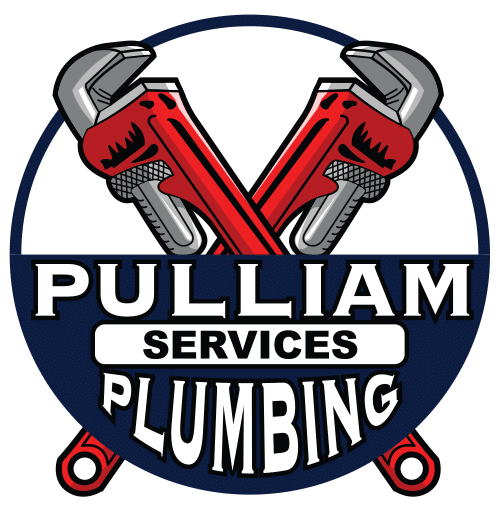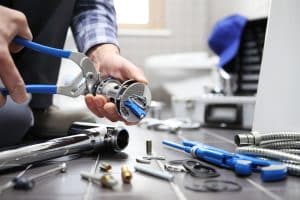Garbage disposals have become a standard feature in modern kitchens, providing an effective and convenient method for managing food waste. While these handy appliances can simplify our lives, they are not immune to issues. Garbage disposal repairs, proper maintenance, and correct installation ensure smooth operation and longevity. As the highest-rated plumbing company in Boerne and Fair Oaks, Texas, we have created this comprehensive guide to provide valuable information and insights on garbage disposal repair, maintenance, and installation.
In this guide, we will cover common problems that plague garbage disposals, as well as their appropriate repair solutions. Additionally, we will share routine maintenance best practices to keep your appliance running efficiently and prolong its lifespan. And, if you are considering installing a new garbage disposal, we will provide essential factors to consider before purchasing and installing the unit to ensure a successful, hassle-free experience.
Trust our expert guidance as we navigate the world of garbage disposals, discussing solutions for common issues, essential care routines, and the installation process. With our support, you can maintain a functional, effective garbage disposal system that serves your household for years to come.
1. Common Garbage Disposal Issues and Repair Solutions
Like any appliance, garbage disposals are prone to issues that may require repairs. Here are some common problems and their solutions:
– Jammed Disposal: A jammed garbage disposal is often caused by foreign objects or fibrous materials getting stuck within the unit. To resolve this issue, turn off the power supply and use a specially designed tool, such as an Allen wrench, to manually rotate the unit’s impeller blades and dislodge the obstruction.
– Overheating: If your disposal stops working suddenly, it may be due to overheating. Check for a reset button beneath the sink and press it to reboot the appliance. If the problem persists, consult a professional.
– Leaks: A leaking garbage disposal is often a result of loose connections or cracks in the unit. Check and tighten all connections, and if needed, apply the plumber’s putty or replace any damaged parts.
– Odors: Unpleasant smells are usually caused by food debris buildup within the disposal. To eliminate the odor, clean the unit with a mixture of baking soda, vinegar, and hot water.
By identifying and addressing these issues, you can maintain a functioning garbage disposal system and reduce the frequency of repairs.
2. Routine Garbage Disposal Maintenance Best Practices
Regular maintenance is crucial to prolonging the lifespan of your garbage disposal. Here are some best practices:
– Clean Regularly: Keep your disposal clean by running cold water and a mild detergent through the unit after use. Once a month, deep-clean the disposal with a mixture of baking soda, vinegar, and hot water.
– Use Cold Water: Always run cold water while using the garbage disposal. Cold water solidifies oils and fats, enabling the disposal to grind them up and flush them away.
– Be Mindful of What You Dispose: Avoid placing hard or fibrous materials, such as bones, corn husks, and fruit pits, in your garbage disposal to prevent jams or damage to the blades.
– Sharpen the Blades: To maintain sharp and efficient blades, occasionally grind ice cubes or small fruit pits in the disposal.
By implementing these maintenance practices, you’ll enjoy a smoothly running garbage disposal unit, preventing future repairs and prolonging the appliance’s lifespan.
3. Choosing the Right Garbage Disposal for Your Home
When selecting a new garbage disposal, consider the following factors:
– Type: There are two main types of garbage disposals – continuous feed and batch feed. Continuous feed models are the most common and operate while the unit is running, whereas batch feed models require a stopper to be in place before starting the unit. Choose the type that best suits your kitchen habits and safety preferences.
– Size: Garbage disposals come in various sizes to accommodate different sink setups and space requirements. Measure the space beneath your sink and choose a model that fits within those dimensions.
– Power: The motor power of garbage disposals varies between 1/3 to 2 horsepower. A higher-powered motor is more suitable for larger households with heavier loads, while a lower-powered motor is sufficient for smaller families.
By considering these factors, you’ll find the perfect garbage disposal solution for your home, ensuring a smooth installation process.
4. Essential Tips for Garbage Disposal Installation
Before installing your new garbage disposal, follow these essential steps:
– Disconnect Power Supply: Before starting the installation process, always ensure that the power supply is turned off.
– Follow Manufacturer’s Instructions: Adhere to the installation manual provided by the manufacturer, as each model may have specific instructions or requirements.
– Secure Connections: Ensure all connections, including electrical and plumbing connections, are securely fastened to prevent leaks or malfunctions.
– Seek Professional Help: If you’re unsure of your ability to install your new garbage disposal correctly, seek the assistance of a professional plumbing company.
By following these tips and best practices, you’ll have a successful, hassle-free installation.
Conclusion
Garbage disposal repairs, maintenance, and installation play a vital role in streamlining kitchen tasks and improving waste management. You’ll enjoy a more efficient and functional garbage disposal system by understanding common issues, establishing a solid maintenance routine, and seeking professional assistance when needed. Don’t hesitate to contact Pulliam Plumbing for expert support in managing all aspects of your garbage disposal needs. Our team of highly rated plumbers in Boerne, TX, is ready to provide exceptional assistance to ensure your garbage disposal runs smoothly for years to come.




